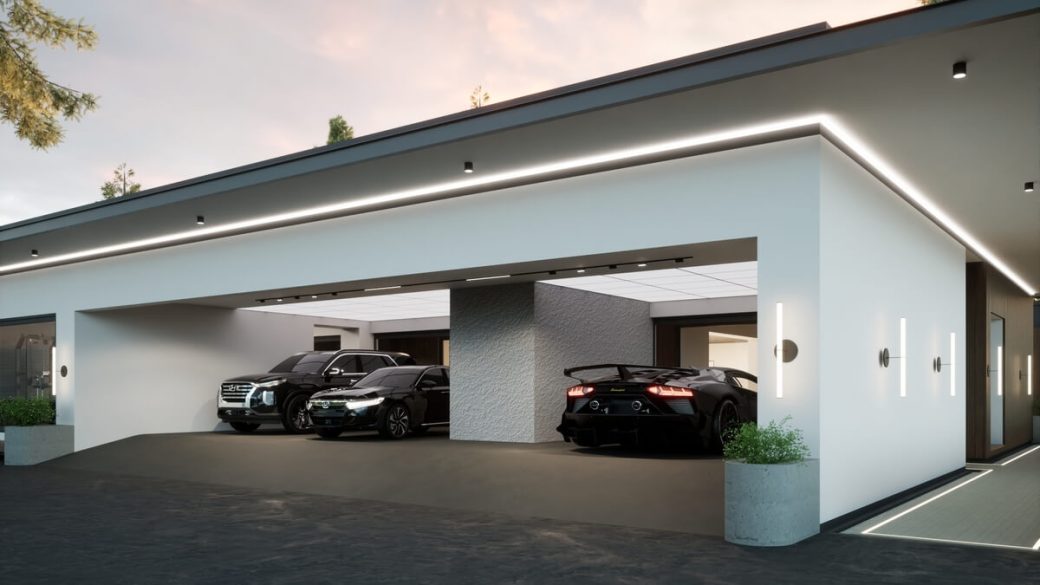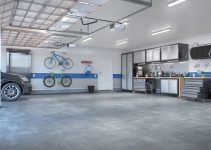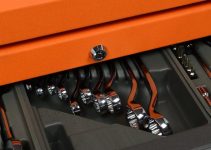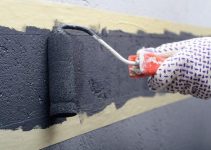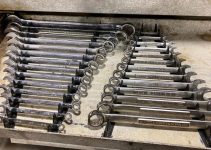People spend most of their time working on the walls and floor when renovating a garage, often neglecting the ceiling. However, the ceiling is an essential piece of any shop, as it functions as a foundation for many accessories, including lighting and roof organizers, and other attachments.
The wide range of ceiling material options doesn’t make it any easier for buyers. To make it even more confusing, each material has its pros and cons, and there is no clear winner here — only a question of personal preference and specific setting.
For example, aluminum soffit is cheap and durable but doesn’t look quite as nice as other alternatives. Drywall is safe and cheap but not so resistant to moisture and takes a fair amount of work and skill to install. Meanwhile, cork is much more eco-friendly and will make your garage look like a high-end wood cabin, but it is also a lot more expensive.
Your specific garage configuration will also come into play. Do you use it solely for storage purposes, or is it a full-fledged repair shop? As a result, it’s not hard to understand why choosing the right ceiling material can be confusing at times, and choosing wrong may cause headaches and see your hard-earned money go down the drain.
But you don’t have to worry about that, as we’ll explain everything you need to know about garage ceilings, including I’ll give you the pros and cons of each solution, hopefully making the decision-making much more straightforward.
Let’s dig in!
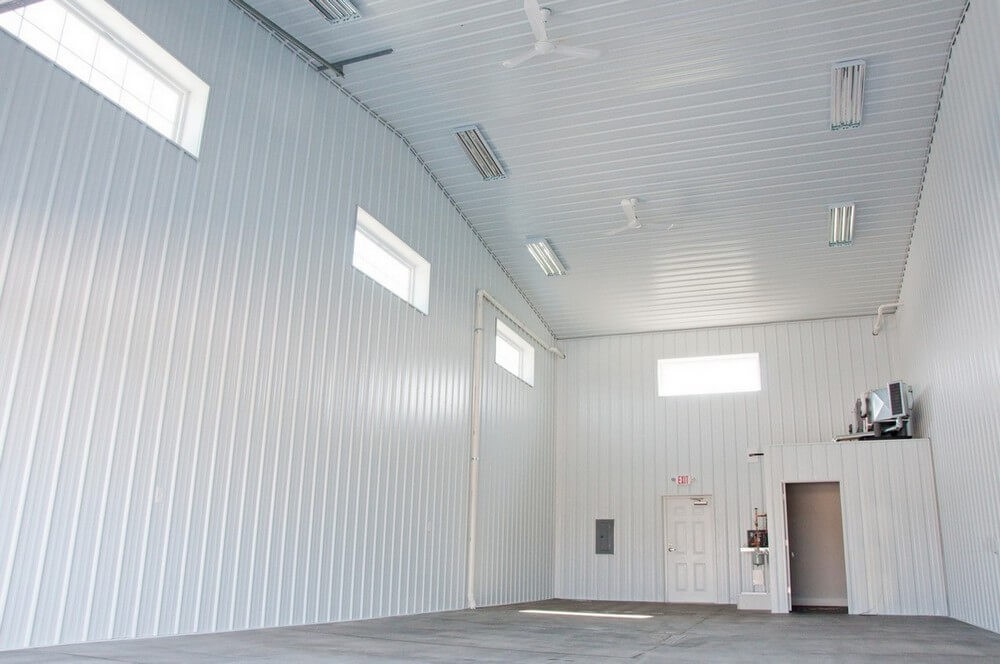
Types of Materials for Your Garage Ceiling
Aluminum Soffit
Not many other material options will be as durable as an aluminum soffit, and it’s also quite eco-friendly, being almost 100% recyclable.
Moreover, it’s reasonably easy to install and doesn’t require much preparation as some other materials do. You could even call it a DIY install, especially if you are a bit handy. Aluminum soffit is also fire- and water-resistant and relatively cheap, making it one of the most popular garage ceiling options.
Insulation, however, is only average. So energy efficiency during winter won’t be as good as with other alternatives. As a result, keeping your garage cool in the summer and warm in the winter might be a challenge. Of course, you could get vented panels, but that will only help in summer. Aluminum soffit ceilings are also vulnerable to dents, but that’s not a big worry since we are talking about ceilings here.
Pros
- Highly durable
- Fire-resistant
- Water-resistant
- Fairly cheap
Cons
- Not the best when it comes to insulation
Drywall
Drywall has been around for over 100 years, and for good reasons. It’s cheap and shares many of the same qualities as aluminum. It won’t be as durable though, but it should still last long enough.
Drywall is also a safe material to use in a garage with all its properties, but isn’t that easy to install correctly. Although it might not look like it, there are a lot of small tricks and details you must be aware of for it to look good and last in time.
That said, it’s an excellent sound insulator, a great advantage for noisy garages. Besides, you can cut it in any desired shape (provided you have some experience — making joints in weird shapes should be left to the pros), giving you modern lighting options that could make your garage look like a billionaire’s man cave.
Pros
- Fire resistant (to some extent)
- Some types are water-resistant
- Noise insulation
- Clean looking
- Highly customizable
- Inexpensive
Cons
- Fairly complex to install properly
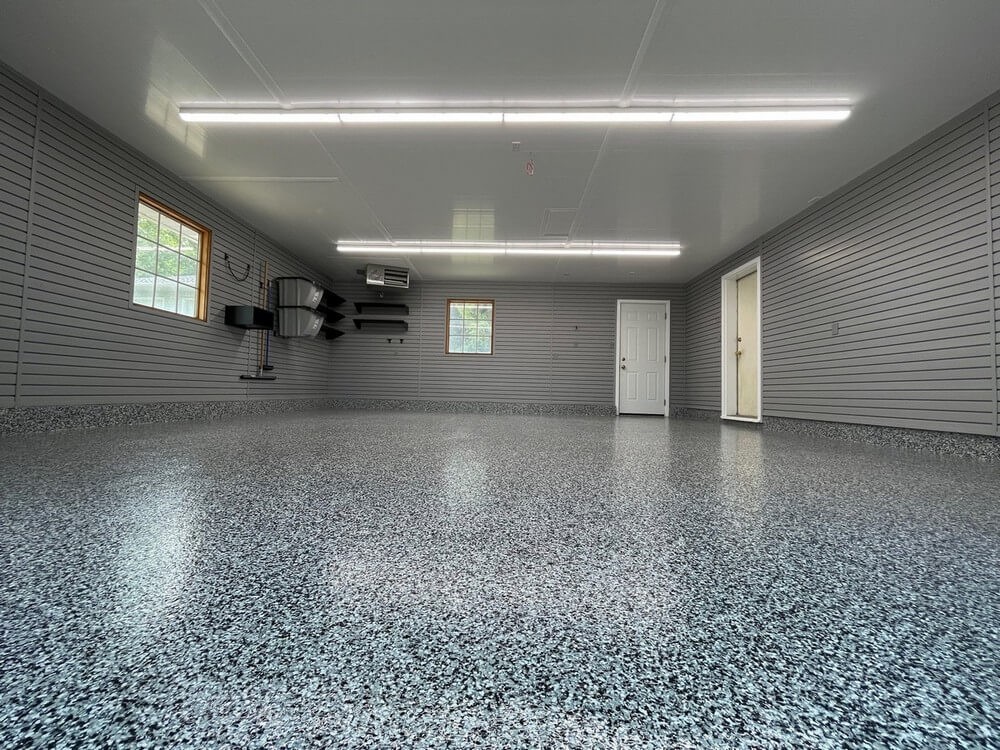
PVC Tiles
Keeping with the theme of inexpensive ceiling materials, another good option is PVC tiles. Since PVC is highly durable plastic, the longevity won’t be far off aluminum, but still slightly inferior.
PVC is a cheap alternative to standard gypsum ceilings and is exceptionally resistant to moisture. It is also self-extinguishing in case of fire but doesn’t hold its structure well at higher temperatures. Thus, it would be best if you avoided lighting that emits a lot of heat, as PVC tiles can deform —focus on low-heat LEDs instead.
That being said, plastic is generally easy to maintain, and PVC tiles are too. Unfortunately, the resemblance with plastic doesn’t end there — they do tend to look also look like plastic, making your garage appear kinda cheaper.
Pros
- Cheap
- Easy to maintain
- Self-extinguishing
- Water-resistant
- Relatively easy to install
Cons
- Deformed by heat
- Cheap looking — not surprising for plastic
Styrofoam Tiles
Styrofoam tiles might sound like a weird alternative, and sure, they’re not as good as some of the previous options, but they do bring some advantages.
For instance, they are super easy to work with and install. A little fragile, sure, but that can be a good thing. Styrofoam is also one of the best heat and sound insulators. Besides, with so many different styles, you can make your garage look like a doctor’s office or an extravagant ballroom and everything in between.
However, there is one significant disadvantage of styrofoam tiles — they are not fire-resistant. Styrofoam is notorious for being very flammable. In addition, Styrofoam tiles tend to stain in the long run and aren’t that easy to clean — but of course, if your garage is mostly used as a repair shop, it won’t matter as much and since they can be easily replaced…
Pros
- High energy efficiency
- Excellent temperature insulation
- Good noise insulation
- Lots of different styles to choose from
- DIY-friendly
Cons
- Flammable
- It would be best if you used low-temperature or low-hanging lights
- Difficult to maintain
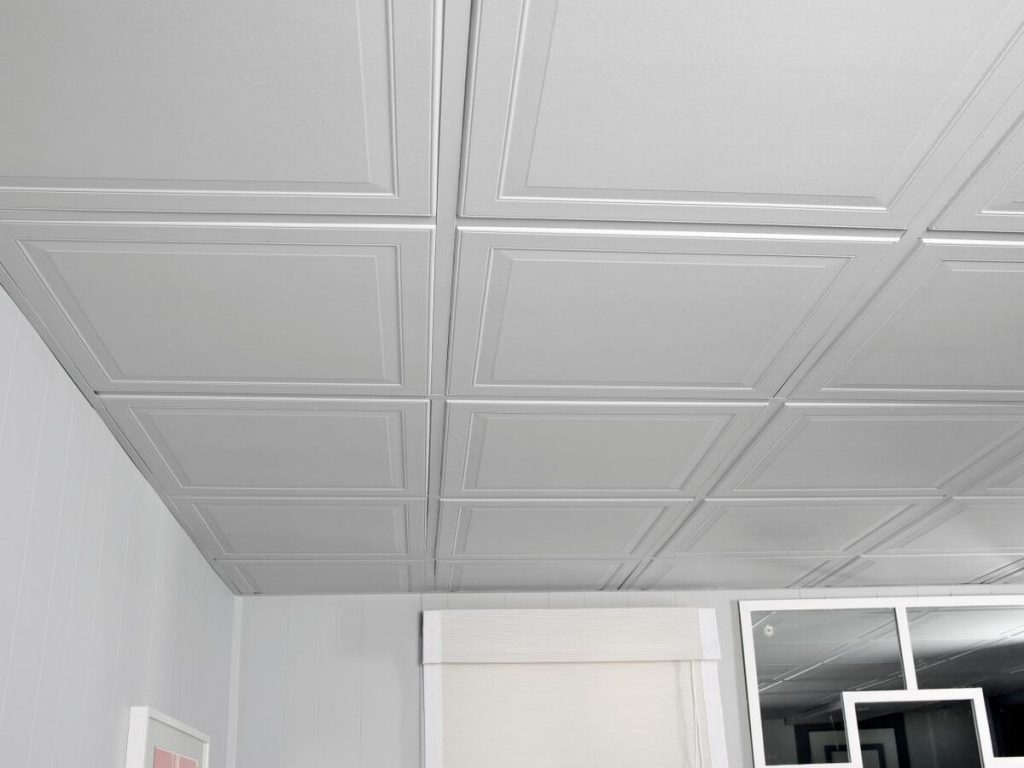
Vinyl Beadboard Soffit
Vinyl beadboards are one of the best-looking options, but that’s pretty much where the pros end.
They are easy to clean — I’ll give them that — but they are hard to work with, so this is not really a DIY project. Vinyl boards aren’t that expensive, but labor will be. Plus, they are neither water nor fire-resistant. They are prone to bending and cracking when exposed to even mild water or heat. And to top all of this off, they aren’t eco-friendly.
You can find some fire-resistant vinyl beadboards or even unique DIY-friendly versions, but the prices are hardly justified.
Pros
- Easy to maintain
- Good looking
- Scratch and dent resistant
Cons
- Prone to bending and cracking under various circumstances
- Hard to install
- Bad for the environment
Plywood
With plywood, we get our first all-natural option. A natural material like this will always have a unique appeal compared to synthetic alternatives. However, with hardwood being way too expensive these days, especially for something like a garage, plywood is a great option, still bringing that natural, high-end look without the price premium.
Plywood is also an impressive insulator but requires a lot of preparation. Sanding and painting are essential to achieve moisture and heat resistance, but there is no way to make them fire-resistant.
The material is, however, robust and durable, meaning its resistant to cracks, warping, and bending. However, remember that the glue used in the manufacturing process is cancerogenic, so take extra care if you install it yourself. And let’s not forget that termites have quite an appetite for wood, which may or may not be a problem depending on where you live.
Pros
- Natural look
- Cheaper than wood
- Durable with the proper preparation
- Noise and temperature insulation
- Moisture and heat resistant
Cons
- Material needs a lot of care and preparation
- Not fire resistant
- Susceptible to termite infestation without the proper protection
Oriented Strand Board (OSB)
Although OSB boards may not be as good-looking as plywood, they might be a better option for a garage, being cheaper, denser, and more robust.
Another great advantage is that OSB is highly DIY-friendly, and you can get much bigger boards that will be much faster to install. For a garage, another huge advantage is that you can hang relatively heavy stuff on it without having to locate support beams like you would with drywall.
That being said, the cons are the same as for plywood. OSB requires preparation and protection to last, making it harder to paint. Still, if you are looking for something natural, this might be your best bet.
Pros
- Cheap
- DIY-friendly
- Stronger than plywood
- Heat and moisture resistant with the proper preparation
- Its an average insulator, better than aluminum in any case
Cons
- Preparation is critical
- Hard to paint
Cork
Cork is our last and possibly the most expensive option. Still, there are a lot of different benefits of using cork for garage ceilings, the first being that it’s the healthiest option. Indeed, cork isn’t cancerogenic, and it’s also antimicrobial and hypoallergenic.
Moreover, it’s the most environmentally-friendly option; its sound-insulating properties are second only to solid rubber, and thermal insulation comes second only after felted wool.
If you want these benefits without the natural look, there are many different styles, like a pleasing greystone pattern or even just flat white. The installation, however, is best done by a professional.
Pros
- Best sound and thermal insulation (unless you plan on having a full-rubber ceiling)
- Not easily damaged when installed on a ceiling
- Water-resistant
- Naturally fire-resistant (different finishes might change that)
- Lots of different patterns to choose from
- Extremely eco-friendly
- Nontoxic, even in case of fire
Cons
- Expensive
- Hard to install
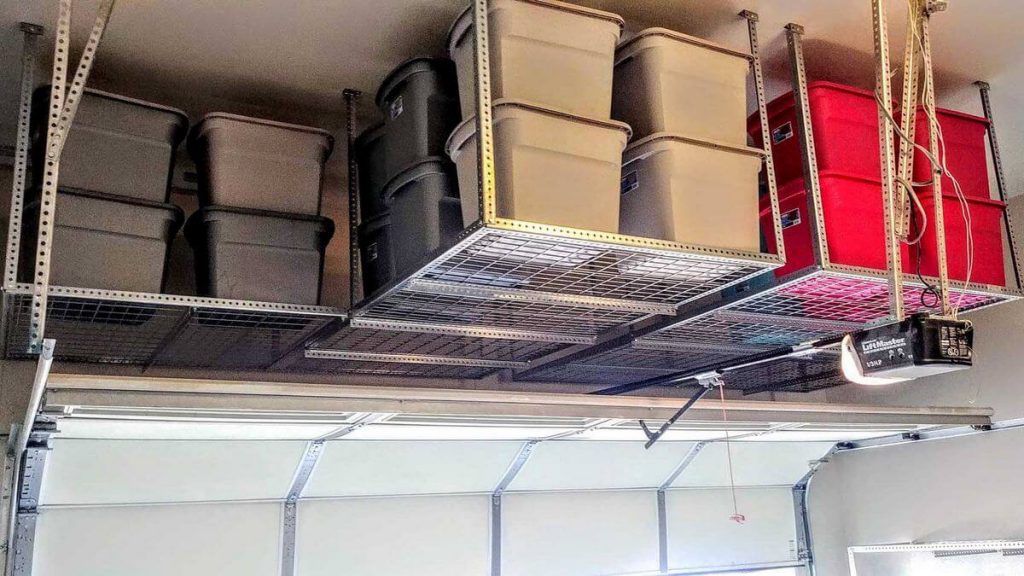
Use Your Garage Ceiling for Storage
Overhead Storage Bins, Baskets, and Containers
Depending on how you set up your garage, a sliding overhead storage bin is the best solution (if compatible with the construction material). With sliding storage bins, the whole ceiling can become a second floor; a huge benefit since they don’t take up any floor or wall space.
Still, the number of overhead bins you’ll be able to fit in there will be limited by the size of your ceiling, and other factors can be restricting. For instance, the garage door might get in the way, and the storage bins might cover lighting. But even if you can only fit a couple, they will still be more practical than shelves.
Moreover, overhead bins can be tricky to get down when loaded with heavy equipment, so be extra careful and mind the type of ceiling you have installed, as some can take more weight than others.
In short, if you can fit them in your garage, overhead bins, baskets, or containers are the way to go!
Overhead Ceiling Racks and Hooks
Overhead racks have many benefits but are much more prone to failure than bins due to often being constructed of thin metal. So, choosing a model from a reputable manufacturer is a must.
Overhead racks do win on customizability when compared to storage bins, though, as you can build them according to your needs. However, heavy objects are quite a chore to get to, and even a slight angle could make the whole thing unstable. Thus, getting a rack with an adjustable leg is highly recommended to account for any slope.
Like overhead storage bins, ensure your ceiling material of choice can take the load or ensure to screw everything in support beams.
Overhead hooks will be helpful for longer objects like skis, kayaks, or building materials. They can usually take more weight, which can be a must depending on the specific application.
Overhead Hoists
Overhead hoists are a handy addition to your garage, and you can use them for a wide range of applications. Still, in my personal experience, they are most helpful when changing engine mounts or swapping an engine.
There are many different overhead hoists, from cranes to chain hoists, most commonly used for private purposes. I won’t get into every kind and model as that can be a whole article by itself. Mounting one usually requires additional structural support, like a steel beam, which is best done by a professional. No need to mention that hoists can get hazardous quite fast if they are not appropriately mounted.
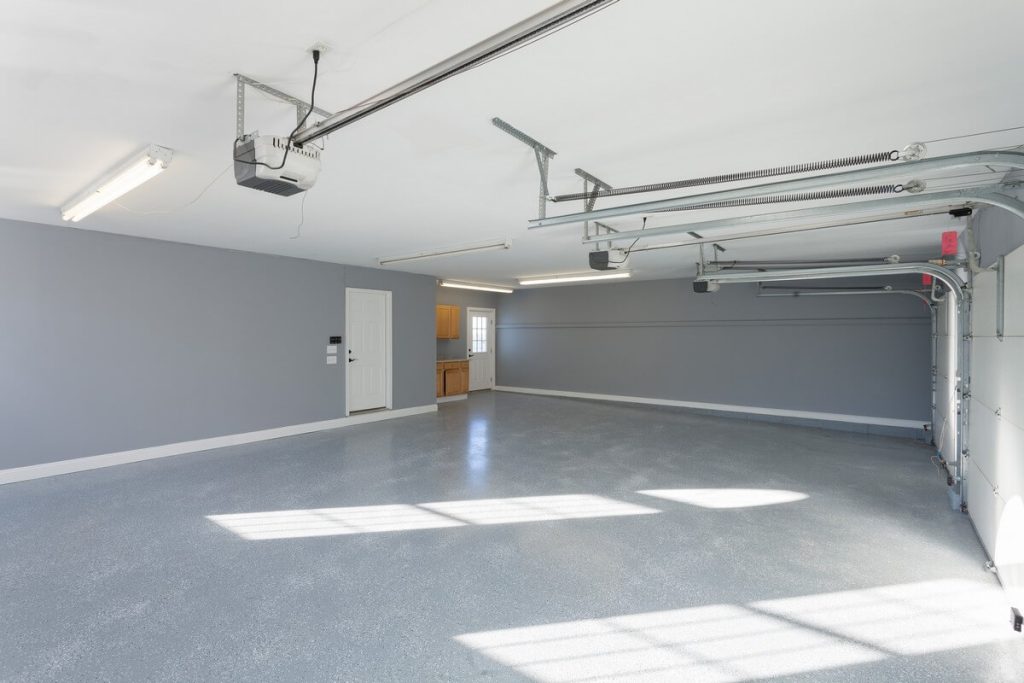
Garage Ceiling Color and Paint Type
Garage ceiling colors can vary a lot more than ceiling materials. So choosing the right one is a task all by itself.
The most commonly used color and the most practical is white, which improves lighting and visibility more than any other alternative. And since visibility in a garage, especially a working garage, is crucial, white is usually your best option.
Most of the materials used will be available in white, but you can also easily paint them in a different color. However, while you can easily paint aluminum and drywall, wooden surfaces, like OSB, will be more challenging as they absorb paint and will require multiple coats to get a decent finish. Each material will need different types of paint and additional preparation, but it’s far from impossible.
But with all the patterned options, it would be wrong not to consider them. For instance, you can order cork in a white marble pattern which will still keep the functionality of white paint but add a lot more style.
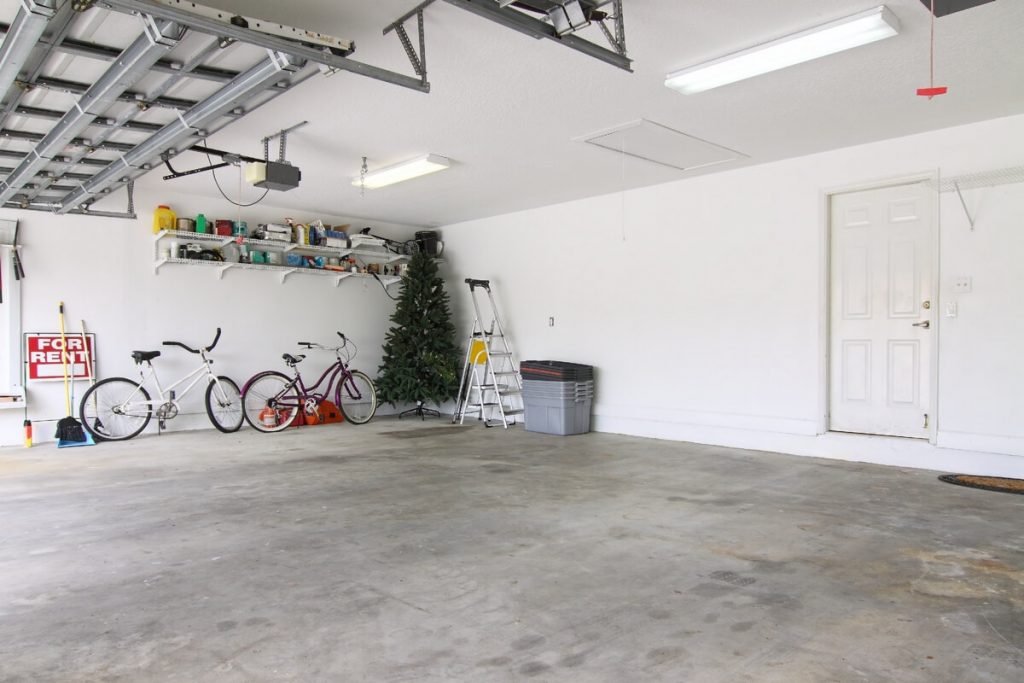
Garage Ceiling Lighting
LED Bulb Lights
LED lights are the safest choice for any application as they don’t produce much heat, which could cause a problem for something like a vinyl beadboard. LED bulbs are versatile, too, as they can be low-hanging or part of a whole lighting unit, depending on your preference.
They are also the easiest to install, emit a lot of light for their size, and are quite affordable, so installing more than one won’t break the bank, especially considering how long they last.
LED or Neon Tubes
Neon tubes have been the go-to choice in most workshops for years, but they always had a lot of drawbacks.
LED tubes eliminate almost all those problems as they don’t need to be connected to a ballast and turn on instantly. Another advantage is that they will last ten times longer than a fluorescent alternative while being brighter and significantly more energy efficient.
Sure, fluorescent lights are easier on the eyes thanks to the “hotter” color, but it’s a good trade-off when working in poorly lit environments like under the car or in an engine bay. LED tubes are also suitable for garages used mostly for storage purposes as you won’t be spending a lot of time in there and visibility is equally important.
LED Bay Lights
Bay lights, in general, are used in warehouses and similar places with high ceilings, but there are also low bay lights. They usually are externally installed on a hanging structure.
Depending on the height of your ceiling, it’s essential to get the right one, as they emit light at different angles, so make sure to do your research if you don’t want the light concentrated only on one spot. The best part about bay lights is that they can be mounted in many different ways, hung by chains, ceiling hooks, or fixed directly to the ceiling.
Their big pro is that they can be moved around without any potential remodeling or changing the power outlet.
Last Words
Of course, there are more garage types than ceiling options, so choosing the correct one will largely depend on your specific setting. Still, if you use your garage to wrench on cars or do any “real” work in there, try to avoid flammable material and choose one that is easy to clean and maintain. And don’t forget to also consider ventilation compatibility and noise insulation.
If, on the other hand, you only use your garage to park your car or store gardening and sports equipment, other options like OSB or styrofoam might be better as they generally provide a much more appealing finish. In this case, it’s really a question of personal preference since there aren’t nearly as many fire hazards then there would be in a welding workshop, for example.
That being said, no matter the ceiling material option you choose to go for, never forget to plan ahead properly — measure twice, cut once, as they say!

